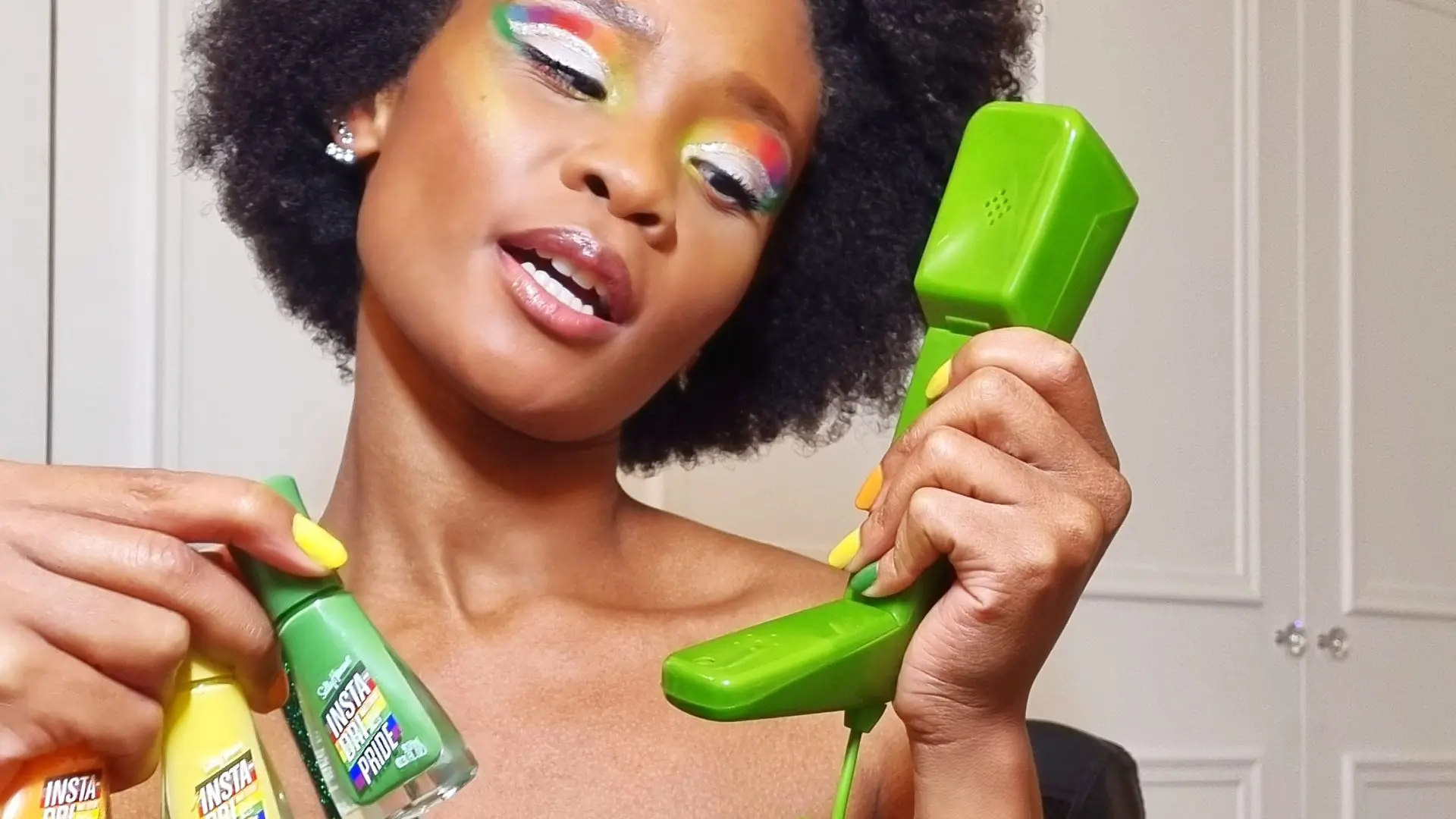

It can also encompass other digital platforms, reviews, articles, etc. This information can then be used for marketing, growth, and brand loyalty purposes.
But how do you carry out a social media sentiment analysis, what can you do with the findings, and what obstacles may you need to navigate? Discover all of this, and more, in our complete breakdown of this crucial part of social media reporting.
With social media sentiment analysis, you’re basically eavesdropping on conversations people are having about your brand online and using that knowledge in a constructive way. It’s often referred to as social listening and/or opinion mining.
If that sounds like a lot of man hours and money, don’t panic, because there are AI driven tools available that can do this for you.
Short answer? All of them. Brands should ideally be looking out for mentions on the big social media platforms – Instagram, Facebook, Twitter, and TikTok.
You can also monitor third-party sites such as Google Reviews and Reddit, and if you have an e-commerce site with reviews, then these can prove invaluable if you pay close attention to what buyers are saying.

Due to the scale of online mentions, sentiment is analysed with broad strokes, because there are so many different emotions that fall under this particular umbrella. Emotions are not an easy thing to measure, but if you split them into good, bad, and neutral categories, you can work out if your brand is being perceived in a positive light.
When you begin your social media sentiment search, you’ll need to choose phrases to search for. In some cases, these will be industry specific; otherwise, they’ll be positive or negative.
Sprout Social gives the below as an example of some positive and negative social sentiment terms:
Searching a bunch of terms like this doesn’t always give you the full picture, so you need to double-check your mentions. For example, an ironic statement such as ‘I hate that I want to eat X all the time’, might get alarm bells ringing, but in this instance the word ‘hate’ isn’t really negative.

You can track social media sentiment manually (see below for how to do it), but it can be a laborious process. If you want a tool to do the hard graft for you, here’s our pick of the best social media sentiment analysis tools on the market today:
Social media sentiment analysis gives brands information that they can utilise to their advantage. It enables you to:
Let’s talk heated seats… ⤵️
— BMW USA (@BMWUSA) July 14, 2022
If you’re not ready to invest in stand-alone social media sentiment analysis tools, it’s possible to do the job manually or with the help of tech that you’re already using.
Hootsuite suggests the following three steps when it comes to social media sentiment analysis:
You may want to drill down further by including specific product or service names in your search, to check which ones your target customers are most and least keen on and why.
The only way to improve your social media sentiment, i.e. the way your brand is perceived, is to respond to the findings and use them to generate a more positive response. Hootsuite suggests the following:
You can use the information gathered from social media sentiment analysis to improve your marketing strategy. Get started with Vamp to amplify your content and make your business famous for all the right reasons.
Evaluating sarcasm and irony is challenging for sentiment analysis tools because these often rely on literal interpretations of words. Advanced machine learning models, like those using natural language processing (NLP), can improve sarcasm detection by analysing context, tone, and patterns within conversations.
Brands can enhance accuracy by training algorithms on specific data sets that reflect their audience’s linguistic nuances or by combining automated analysis with human review to capture subtleties that AI might miss.
Responding to negative sentiment requires careful consideration of tone, language, and timing. Brands should respond promptly to acknowledge the issue, while maintaining a respectful and empathetic tone.
Personalisation is key—avoiding automated responses helps to show that the brand values the individual’s feedback. Additionally, offering solutions or addressing the concerns publicly demonstrates accountability, while more sensitive issues may be best handled privately to prevent escalation.
The ideal frequency for sentiment analysis depends on the brand’s social media activity and the volume of user interactions. For brands with active communities or campaigns, real-time or daily analysis ensures swift responses to emerging trends.
However, smaller brands may opt for weekly or monthly assessments. During high-stakes events, launches, or crises, more frequent monitoring is crucial to maintain control over brand reputation and adjust strategies quickly.



| Cookie | Duration | Description |
|---|---|---|
| __cf_bm | 30 minutes | This cookie, set by Cloudflare, is used to support Cloudflare Bot Management. |
| _abck | 1 year | This cookie is used to detect and defend when a client attempt to replay a cookie.This cookie manages the interaction with online bots and takes the appropriate actions. |
| _GRECAPTCHA | 5 months 27 days | This cookie is set by the Google recaptcha service to identify bots to protect the website against malicious spam attacks. |
| bm_sz | 4 hours | This cookie is set by the provider Akamai Bot Manager. This cookie is used to manage the interaction with the online bots. It also helps in fraud preventions |
| cookielawinfo-checkbox-advertisement | 1 year | Set by the GDPR Cookie Consent plugin, this cookie is used to record the user consent for the cookies in the "Advertisement" category . |
| cookielawinfo-checkbox-analytics | 11 months | This cookie is set by GDPR Cookie Consent plugin. The cookie is used to store the user consent for the cookies in the category "Analytics". |
| cookielawinfo-checkbox-functional | 11 months | The cookie is set by GDPR cookie consent to record the user consent for the cookies in the category "Functional". |
| cookielawinfo-checkbox-necessary | 11 months | This cookie is set by GDPR Cookie Consent plugin. The cookies is used to store the user consent for the cookies in the category "Necessary". |
| cookielawinfo-checkbox-others | 11 months | This cookie is set by GDPR Cookie Consent plugin. The cookie is used to store the user consent for the cookies in the category "Other. |
| cookielawinfo-checkbox-performance | 11 months | This cookie is set by GDPR Cookie Consent plugin. The cookie is used to store the user consent for the cookies in the category "Performance". |
| CookieLawInfoConsent | 1 year | Records the default button state of the corresponding category & the status of CCPA. It works only in coordination with the primary cookie. |
| csrftoken | past | This cookie is associated with Django web development platform for python. Used to help protect the website against Cross-Site Request Forgery attacks |
| elementor | never | This cookie is used by the website's WordPress theme. It allows the website owner to implement or change the website's content in real-time. |
| viewed_cookie_policy | 11 months | The cookie is set by the GDPR Cookie Consent plugin and is used to store whether or not user has consented to the use of cookies. It does not store any personal data. |
| Cookie | Duration | Description |
|---|---|---|
| __hssc | 30 minutes | HubSpot sets this cookie to keep track of sessions and to determine if HubSpot should increment the session number and timestamps in the __hstc cookie. |
| __hssrc | session | This cookie is set by Hubspot whenever it changes the session cookie. The __hssrc cookie set to 1 indicates that the user has restarted the browser, and if the cookie does not exist, it is assumed to be a new session. |
| __hstc | 5 months 27 days | This is the main cookie set by Hubspot, for tracking visitors. It contains the domain, initial timestamp (first visit), last timestamp (last visit), current timestamp (this visit), and session number (increments for each subsequent session). |
| _ga | 2 years | The _ga cookie, installed by Google Analytics, calculates visitor, session and campaign data and also keeps track of site usage for the site's analytics report. The cookie stores information anonymously and assigns a randomly generated number to recognize unique visitors. |
| _ga_56JWQ0019V | 2 years | This cookie is installed by Google Analytics. |
| _gat_UA-132076027-1 | 1 minute | A variation of the _gat cookie set by Google Analytics and Google Tag Manager to allow website owners to track visitor behaviour and measure site performance. The pattern element in the name contains the unique identity number of the account or website it relates to. |
| _gcl_au | 3 months | Provided by Google Tag Manager to experiment advertisement efficiency of websites using their services. |
| _gid | 1 day | Installed by Google Analytics, _gid cookie stores information on how visitors use a website, while also creating an analytics report of the website's performance. Some of the data that are collected include the number of visitors, their source, and the pages they visit anonymously. |
| bscookie | 1 year | LinkedIn sets this cookie to store performed actions on the website. |
| CONSENT | 2 years | YouTube sets this cookie via embedded youtube-videos and registers anonymous statistical data. |
| hubspotutk | 5 months 27 days | HubSpot sets this cookie to keep track of the visitors to the website. This cookie is passed to HubSpot on form submission and used when deduplicating contacts. |
| Cookie | Duration | Description |
|---|---|---|
| _fbp | 3 months | This cookie is set by Facebook to display advertisements when either on Facebook or on a digital platform powered by Facebook advertising, after visiting the website. |
| _pin_unauth | 1 year | This cookie is placed by Pinterest Tag when the user cannot be matched. It contains a unique UUID to group actions across pages. |
| AnalyticsSyncHistory | 1 month | No description |
| bcookie | 1 year | LinkedIn sets this cookie from LinkedIn share buttons and ad tags to recognize browser ID. |
| bscookie | 1 year | LinkedIn sets this cookie to store performed actions on the website. |
| fr | 3 months | Facebook sets this cookie to show relevant advertisements to users by tracking user behaviour across the web, on sites that have Facebook pixel or Facebook social plugin. |
| IDE | 1 year 24 days | Google DoubleClick IDE cookies are used to store information about how the user uses the website to present them with relevant ads and according to the user profile. |
| lang | session | LinkedIn sets this cookie to remember a user's language setting. |
| lidc | 1 day | LinkedIn sets the lidc cookie to facilitate data center selection. |
| MONITOR_WEB_ID | 3 months | The cookie is used by: TikTok The functionality is: to store if the user has seen embedded content. The purpose is: Marketing/Tracking |
| test_cookie | 15 minutes | The test_cookie is set by doubleclick.net and is used to determine if the user's browser supports cookies. |
| ttwid | 1 year | No description available. |
| UserMatchHistory | 1 month | LinkedIn sets this cookie for LinkedIn Ads ID syncing. |
| VISITOR_INFO1_LIVE | 5 months 27 days | A cookie set by YouTube to measure bandwidth that determines whether the user gets the new or old player interface. |
| YSC | session | YSC cookie is set by Youtube and is used to track the views of embedded videos on Youtube pages. |
| yt-remote-connected-devices | never | YouTube sets this cookie to store the video preferences of the user using embedded YouTube video. |
| yt-remote-device-id | never | YouTube sets this cookie to store the video preferences of the user using embedded YouTube video. |
| yt.innertube::nextId | never | This cookie, set by YouTube, registers a unique ID to store data on what videos from YouTube the user has seen. |
| yt.innertube::requests | never | This cookie, set by YouTube, registers a unique ID to store data on what videos from YouTube the user has seen. |
| Cookie | Duration | Description |
|---|---|---|
| li_gc | 5 months 27 days | No description |
| ln_or | 1 day | No description |
| msToken | 10 days | No description |
| wp-wpml_current_language | session | No description available. |